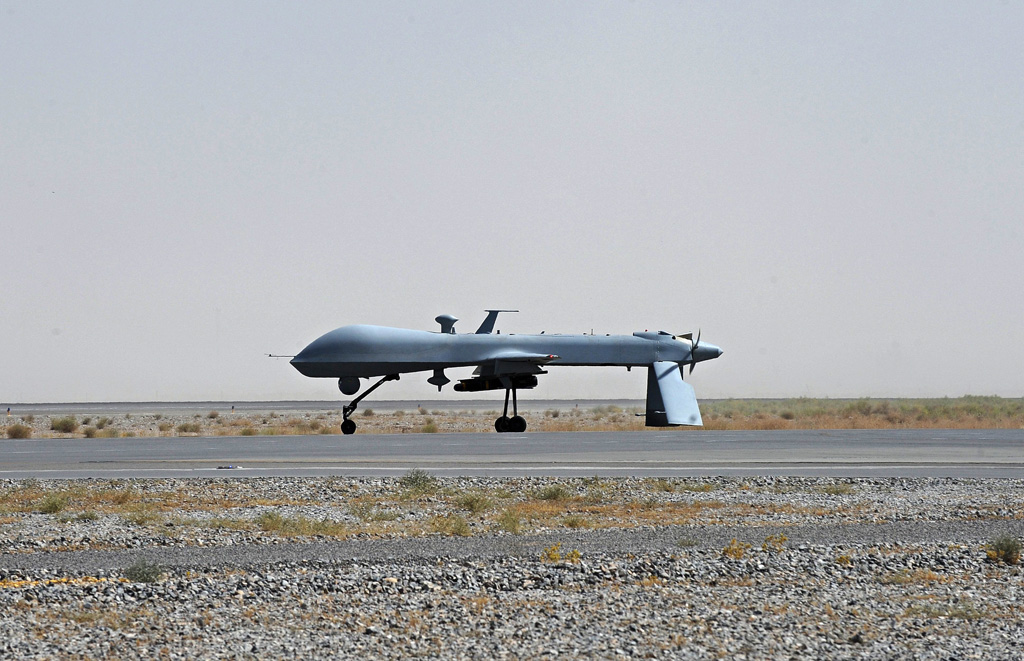
Rights activists urged journalists to highlight casualties of drone strikes and to challenge the official narrative on drones in Pakistan after the screening of a film Unseen War on Saturday.
One way to do this would be to generate a debate on the impact of drone strikes on innocent civilians living in the targeted areas and overcoming the “invisibility” surrounding this technology through information gathering.
Mainstreaming a counter-narrative and collecting information about drones and their victims is not an easy task. It might even seem impossible, given the secrecy surrounding the US drone campaign and the high level of inaccessibility of areas where these strikes are conducted. Yet, there are some attempts to piece together information about drone strikes from disparate sources and make a case against the negative impact of these strikes.
The film, produced by Tactical Technology Collective, an international non-profit linking activism with technology, showed interviews with journalists, an academic and a technologist to give a basic understanding of the tribal areas and the drone technology being used by the US to target militants there.

Through the interviews, the film tries to establish that the covert use of drones for killing militants allows its users “political, military and moral invisibility”. This invisibility coupled with the historical unequal treatment of, and control of information in, the tribal areas leads to self-censorship and indifference in journalistic reporting of the strikes.
But the film puts through the important question of whether drone strikes are legitimising targeted killings. It also sheds light on the way information and communications technology could be used to collect and understand information about the strikes and their impact.
In the subsequent discussion, Shahzad Akbar, a legal fellow for UK-based organisation, Reprieve, said the strikes are killing people “without due process by state, by any state.”
The United Nations has condemned drone strikes. These are against the international law and the Constitution of Pakistan, said Akbar, whose organisation is fighting a case in the Peshawar High Court on behalf of civilians killed in the drone attacks.
The Bureau of Investigative Journalism estimates at least 416 civilians have been killed in US drone strikes in Pakistan between 2004 and 2013, but the bureau also states that only 1.5 per cent of drone casualties can be confirmed as “high-value targets.” The vast majority of drone’s victims — around 76 per cent of the total — fall in the grey area of “alleged combatants.”
During the discussion, Taha Siddiqui, a journalist who also appears in the film, said the narrative is controlled and people are not asking crucial questions about the presence of militants in a given location in the first place.
Another panellist Sadaf Baig, who also appeared in the film, said the Federally Administered Tribal Areas (Fata) were an “information black hole” even before 9/11. The panellists agreed that there was a lack of information in the press regarding drone strikes. Akbar said the Pakistani media’s role is especially problematic.
The film’s producer, Marek Tuszynski, who joined the discussion via Skype, said the film is part of a series called “Exposing the Invisible,” which looks at two things: a new way of investigating hidden information through collaboration and use of technology, and shedding light on the concept of invisibility in situations such as drone strikes where the aggressor usually has access to all information but people outside see nothing.
The event was organised by the Digital Rights Foundation, a Pakistani research and advocacy initiative at the ongoing third annual “Cyber Secure Pakistan Conference”.
Published in The Express Tribune, January 12th, 2014.
COMMENTS (1)
Comments are moderated and generally will be posted if they are on-topic and not abusive.
For more information, please see our Comments FAQ




1719131916-0/Lily-Allen-and-David-Harbor-(1)1719131916-0-165x106.webp)


















Just what the heck do "drones" have to do with/in a "Cyber Security Conference"?